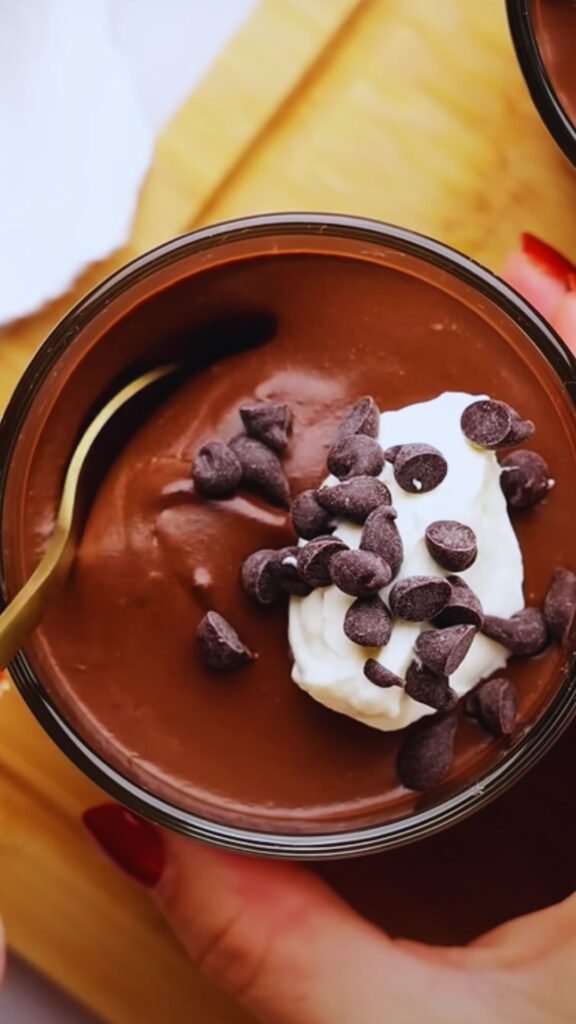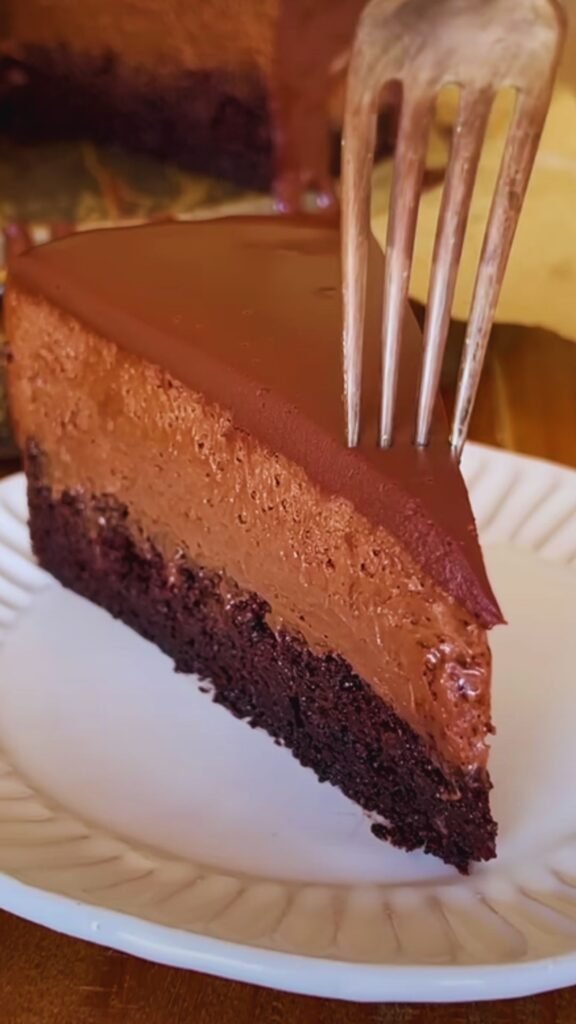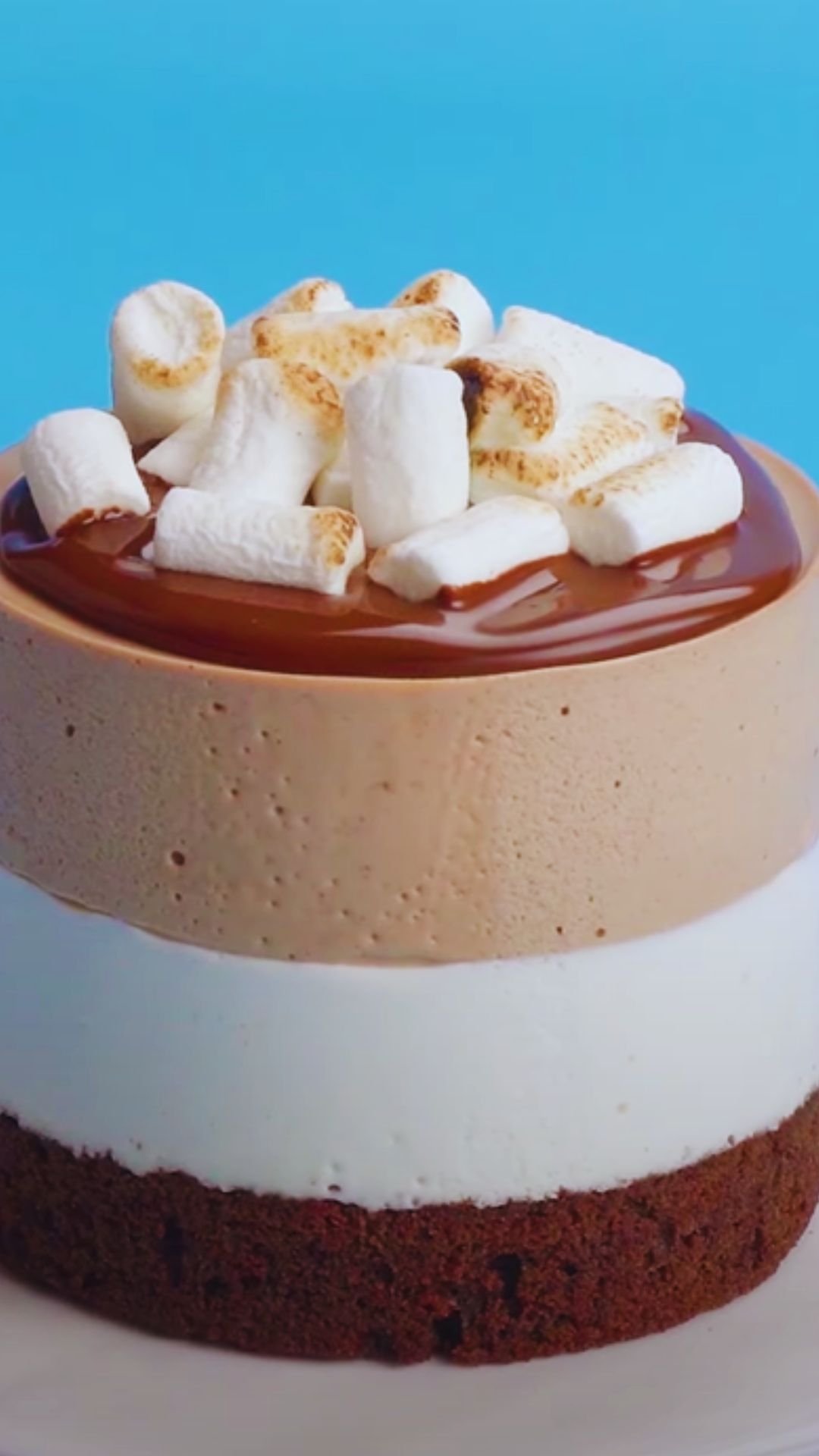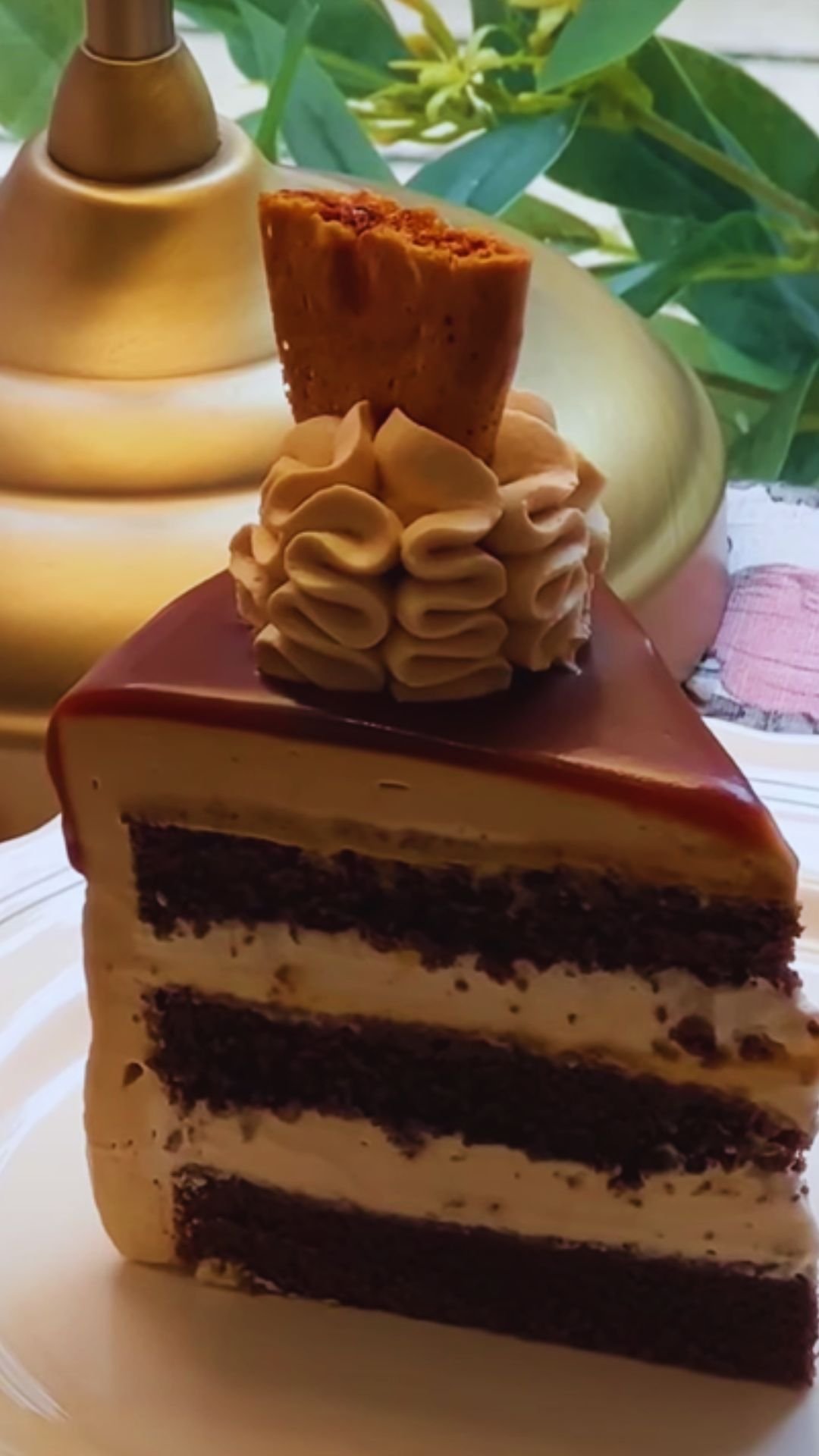Have you ever craved that perfect chocolate dessert that’s both light as air and intensely rich? Something that melts in your mouth yet satisfies your deepest chocolate cravings? Well, I’m about to share my absolute favorite chocolate mousse recipe that I’ve been perfecting for over a decade. This isn’t just any chocolate mousse – it’s THE chocolate mousse that has impressed even the most discerning dessert critics at my dinner parties.
Why This Chocolate Mousse Is Truly the Best
I’m not one to throw around superlatives lightly, but this chocolate mousse deserves every bit of praise. What makes it so special? It strikes that perfect balance between simplicity and sophistication. The texture is impossibly silky – neither too dense nor too airy – and the chocolate flavor is deep and complex without being overwhelming.
After trying countless recipes and techniques over the years, I’ve discovered the secrets to creating the perfect chocolate mousse. From selecting the right chocolate to mastering the perfect folding technique, every detail matters when crafting this classic French dessert.
The Science Behind Perfect Mousse
Before diving into the recipe, let’s understand what makes a truly exceptional chocolate mousse. The word “mousse” comes from the French word meaning “foam” or “froth,” which perfectly describes the light, airy texture we’re aiming for.
The magic of mousse lies in its structure – tiny air bubbles suspended in a flavored base. These bubbles are created and stabilized in three main ways:
- Whipped egg whites: Create volume through protein networks that trap air
- Whipped cream: Provides richness and additional air pockets
- Chocolate setting: Cocoa butter solidifies when cooled, helping maintain structure
Understanding these elements helps us make better choices in our preparation methods. For example, room temperature egg whites whip better than cold ones, and chocolate must be melted carefully to avoid seizing or separating.
Ingredients That Make the Difference

The quality of ingredients dramatically impacts your final result. Here’s what I recommend:
Chocolate Selection
: The foundation of your mousse. Use high-quality dark chocolate with 60-70% cocoa content for optimal flavor depth. Single-origin chocolates can offer unique flavor profiles, from fruity to earthy notes. I prefer Valrhona, Guittard, or Callebaut, but any good quality chocolate will work.
Eggs
: Must be fresh and ideally at room temperature for maximum volume when whipping. The whites provide structure while the yolks add richness.
Heavy Cream
: Choose cream with at least 36% fat content for the best whipping results and luxurious mouthfeel.
Sweetener
: I use a combination of granulated sugar and a touch of honey for complexity. The honey adds subtle floral notes that enhance the chocolate.
Salt
: A small amount of flaky sea salt amplifies the chocolate flavor without making the mousse taste salty.
Optional Flavorings
: Vanilla extract, espresso powder, or a splash of liqueur can enhance the chocolate flavor without overpowering it.
Essential Equipment
Having the right tools makes preparing this mousse much easier:
- Stand mixer or electric hand mixer for whipping eggs and cream
- Heat-resistant glass bowls for melting chocolate
- Rubber spatula for gentle folding
- Fine mesh sieve for smooth texture
- Individual serving glasses or ramekins
- Digital thermometer (optional but helpful)
The Ultimate Chocolate Mousse Recipe
Preparation Time: 30 minutes
Chilling Time: 4 hours minimum, preferably overnight
Servings: 6
Ingredients
- 8 ounces (225g) high-quality dark chocolate (60-70% cocoa solids), chopped
- 4 tablespoons (60g) unsalted butter, cubed
- 4 large eggs, separated, at room temperature
- 1/4 cup (50g) granulated sugar
- 1 tablespoon honey
- 1 cup (240ml) heavy cream, cold
- 1 teaspoon pure vanilla extract
- 1/4 teaspoon espresso powder (optional)
- 1/4 teaspoon flaky sea salt
- Chocolate shavings, for garnish
- Fresh berries, for serving (optional)
Step-by-Step Instructions
- Prepare the chocolate base:
- Create a double boiler by placing a heat-resistant bowl over a pot of barely simmering water (make sure the bottom of the bowl doesn’t touch the water).
- Add the chopped chocolate and butter to the bowl.
- Melt gently, stirring occasionally with a rubber spatula until completely smooth.
- Remove from heat and let cool slightly until warm but not hot (about 110°F/45°C).
- Stir in espresso powder if using.
- Prepare the egg yolk mixture:
- In a separate bowl, whisk the egg yolks with half the sugar and honey until pale and slightly thickened.
- Gradually add the warm (not hot) chocolate mixture to the egg yolks, whisking constantly.
- Add vanilla extract and salt, mixing well to combine.
- Whip the egg whites:
- In a clean, dry bowl, beat the egg whites with an electric mixer on medium speed until foamy.
- Gradually add the remaining sugar while beating.
- Continue beating until firm peaks form that hold their shape but aren’t dry or stiff.
- Whip the cream:
- In another cold bowl, whip the heavy cream until it forms soft peaks.
- Be careful not to overwhip – the cream should hold its shape but still be soft and billowy.
- Combine everything:
- Using a rubber spatula, gently fold 1/3 of the whipped egg whites into the chocolate mixture to lighten it.
- Fold in the remaining egg whites in two additions, using a gentle up-and-over motion to preserve as much air as possible.
- Finally, fold in the whipped cream until just combined and no white streaks remain.
- Chill the mousse:
- Divide the mousse among 6 serving glasses or ramekins.
- Cover with plastic wrap and refrigerate for at least 4 hours, preferably overnight.
- Serve:
- Just before serving, garnish with chocolate shavings and fresh berries if desired.
Troubleshooting Common Mousse Problems
Even experienced cooks can encounter issues when making chocolate mousse. Here’s how to solve the most common problems:
| Problem | Possible Cause | Solution |
|---|---|---|
| Grainy texture | Chocolate seized due to moisture or overheating | Melt chocolate gently; ensure all equipment is completely dry |
| Mousse too dense | Overfolded mixture or insufficient whipping | Fold gently; ensure egg whites and cream are properly whipped |
| Mousse too soft | Insufficient chilling or too little chocolate | Chill longer; check chocolate percentage (use 60-70%) |
| Egg whites won’t whip | Traces of fat in bowl or yolk contamination | Use clean, dry equipment; separate eggs carefully |
| Mousse separates | Temperature issues when combining ingredients | Ensure chocolate mixture has cooled sufficiently before adding |
| Mousse tastes eggy | Insufficient chocolate or flavoring | Balance with more chocolate, vanilla, or a pinch of salt |
| Deflated mousse | Rough handling or waiting too long to chill | Fold gently; chill immediately after preparation |
Variations to Try

Once you’ve mastered the classic recipe, try these exciting variations:
- White Chocolate Raspberry: Replace dark chocolate with white chocolate and swirl in raspberry puree before chilling.
- Orange Infused: Add fresh orange zest and a tablespoon of Grand Marnier to the chocolate mixture.
- Mint Chocolate: Infuse the cream with fresh mint leaves before whipping and add a drop of mint extract.
- Salted Caramel: Swirl in homemade salted caramel sauce before chilling.
- Mexican Chocolate: Add cinnamon and a pinch of cayenne pepper for a spicy kick.
- Marbled Mousse: Make both dark and white chocolate batches and gently swirl together.
Health Adaptations
Looking for a slightly lighter version or have dietary restrictions? Here are some adaptations:
- Dairy-Free: Use coconut cream instead of heavy cream and dairy-free chocolate.
- Lower Sugar: Reduce the sugar by half and use 70-85% dark chocolate.
- Vegan Option: Replace eggs with aquafaba (chickpea liquid) and use plant-based cream and dark chocolate.
- Gluten-Free: This recipe is naturally gluten-free, but always check chocolate ingredients for cross-contamination.
Make-Ahead and Storage Tips
One of the best things about chocolate mousse is that it’s a perfect make-ahead dessert. Here’s how to store it properly:
- Refrigeration: Mousse will keep well in the refrigerator for up to 3 days. Cover individual portions tightly with plastic wrap to prevent absorption of other flavors.
- Freezing: Yes, you can freeze chocolate mousse! Freeze for up to 2 months in airtight containers. Thaw overnight in the refrigerator for best texture.
- Transport: If taking to a gathering, transport in a cooler with ice packs to maintain temperature.
Serving Suggestions

Presentation can elevate your chocolate mousse from delicious to unforgettable:
- Serve in clear glasses to showcase the beautiful texture and layers
- Top with fresh berries for color contrast and flavor balance
- Add a small dollop of lightly sweetened whipped cream
- Dust with high-quality cocoa powder just before serving
- Pair with thin, crisp cookies for textural contrast
- Serve with hot espresso for a perfect flavor combination
- Create a dessert board with small portions of mousse alongside other bite-sized treats
- For special occasions, serve in chocolate cups made by dipping balloons in melted chocolate
The History of Chocolate Mousse
While we’re enjoying this delectable dessert, let’s appreciate its rich history. Chocolate mousse as we know it today originated in France in the early 19th century, though similar desserts existed earlier. The word “mousse” first appeared in a French cookbook in 1755, referring to a frothy preparation.
Chocolate mousse became popular in the United States in the 1930s after being featured in fashionable restaurants and women’s magazines. It was considered an elegant, sophisticated dessert associated with French cuisine.
Traditional recipes often used raw eggs, but modern versions (like mine) often heat the eggs slightly in the chocolate mixture for food safety while maintaining that classic texture.
Nutritional Information
For those who like to know what they’re consuming, here’s the approximate nutritional breakdown per serving:
| Nutrient | Amount per Serving |
|---|---|
| Calories | 395 |
| Total Fat | 32g |
| Saturated Fat | 18g |
| Cholesterol | 185mg |
| Sodium | 95mg |
| Total Carbohydrates | 22g |
| Dietary Fiber | 3g |
| Sugars | 18g |
| Protein | 7g |
Frequently Asked Questions
Q: Can I make chocolate mousse ahead of time? Absolutely! Chocolate mousse actually benefits from being made ahead. I recommend making it at least 4 hours before serving, but it can be made up to 3 days in advance.
Q: Is it safe to eat mousse with raw eggs? Traditional mousse does contain raw eggs, which carries a small risk of salmonella. My recipe slightly warms the eggs in the chocolate mixture, reducing this risk. If you’re concerned, use pasteurized eggs or try an eggless variation.
Q: Why did my mousse turn out grainy? Grainy mousse is usually caused by chocolate that has seized. This happens when chocolate is overheated or comes into contact with water. To prevent this, make sure all your equipment is completely dry and melt the chocolate gently.
Q: Can I freeze chocolate mousse? Yes! Chocolate mousse freezes surprisingly well. Store it in an airtight container for up to 2 months. Thaw overnight in the refrigerator before serving.
Q: What chocolate should I use for the best mousse? For the best results, use high-quality dark chocolate with 60-70% cocoa solids. This provides the perfect balance of sweetness and chocolate intensity.
Q: My mousse didn’t set properly. What went wrong? If your mousse is too soft, it may not have been chilled long enough or the chocolate percentage was too low. Make sure to use the recommended chocolate and chill for at least 4 hours.
Q: Can I make a dairy-free version? Yes! Replace the heavy cream with full-fat coconut cream and use dairy-free chocolate. The results are slightly different but still delicious.
Q: How can I tell if my egg whites are properly whipped? Properly whipped egg whites should form peaks that hold their shape but still have a slight bend at the tip. If they’re too stiff or grainy, they’ve been overwhipped.
Q: Why do you add espresso powder? The tiny amount of espresso powder doesn’t make the mousse taste like coffee – it actually enhances and deepens the chocolate flavor. It’s optional but highly recommended!
Q: Can I use milk chocolate instead of dark? Yes, but the mousse will be sweeter and less intensely chocolatey. If using milk chocolate, reduce the added sugar by half.
My Final Tips for Mousse Perfection
After years of making this recipe, I’ve discovered a few final tips that make all the difference:
- Temperature matters – chocolate should be warm but not hot when added to egg yolks to avoid cooking them.
- Patience pays off – don’t rush the folding process or the chilling time.
- Quality ingredients make a noticeable difference, especially the chocolate.
- The perfect mousse has a balance of richness and lightness – neither too dense nor too airy.
- Trust your instincts – the mousse should fall from your spatula in thick, smooth ribbons when ready to portion.
There you have it – my complete guide to making the absolute best chocolate mousse. This recipe has never failed to impress, and I’m confident it will become one of your favorite desserts to make and share. The combination of rich chocolate flavor and ethereal texture makes it a timeless classic that’s worth mastering.
When you make this recipe, take your time and enjoy the process. There’s something meditative about carefully folding those ingredients together, watching the transformation from separate components into a harmonious, silky dessert. And the rewards – that first spoonful of perfectly chilled mousse – are absolutely worth the effort.


